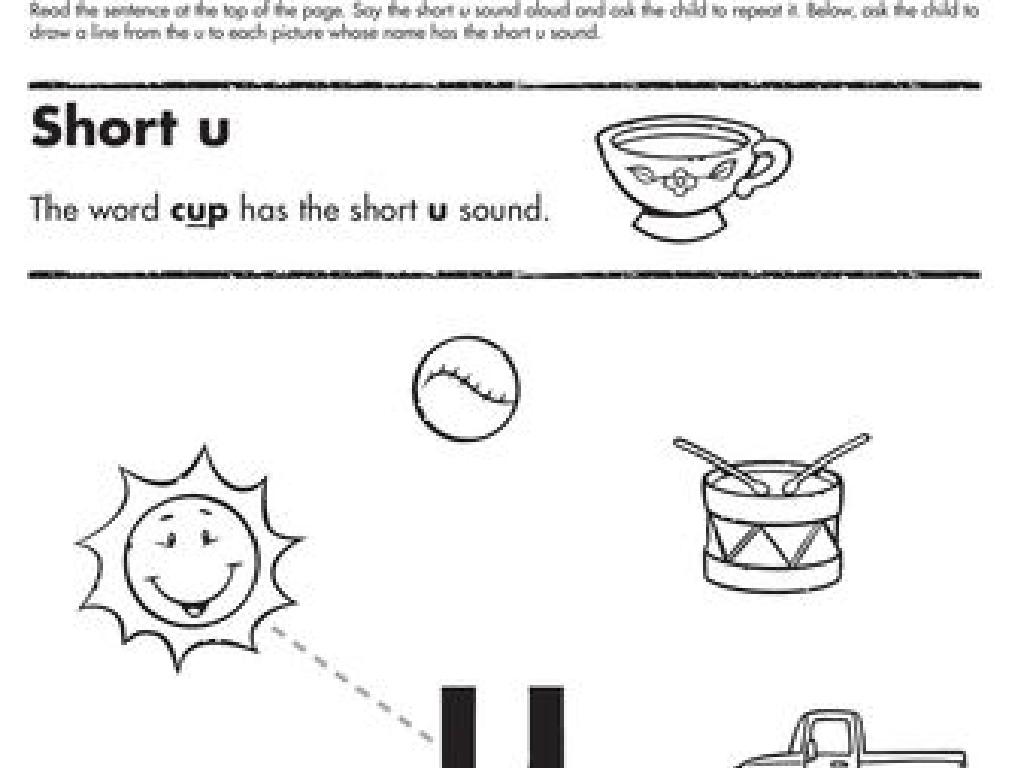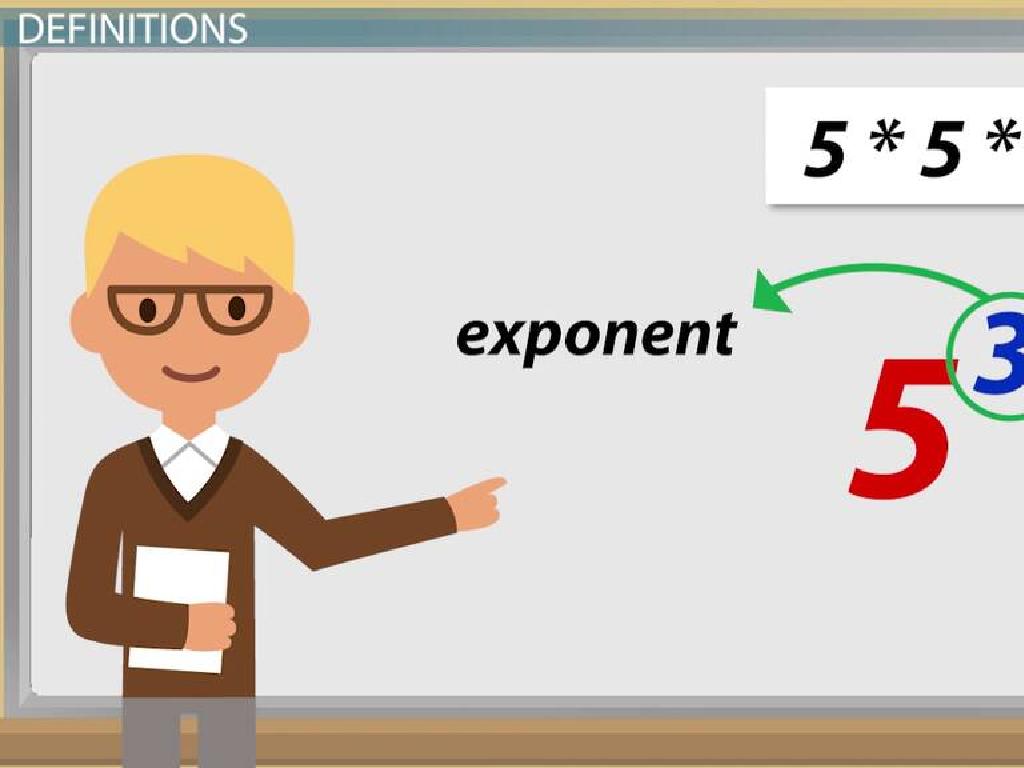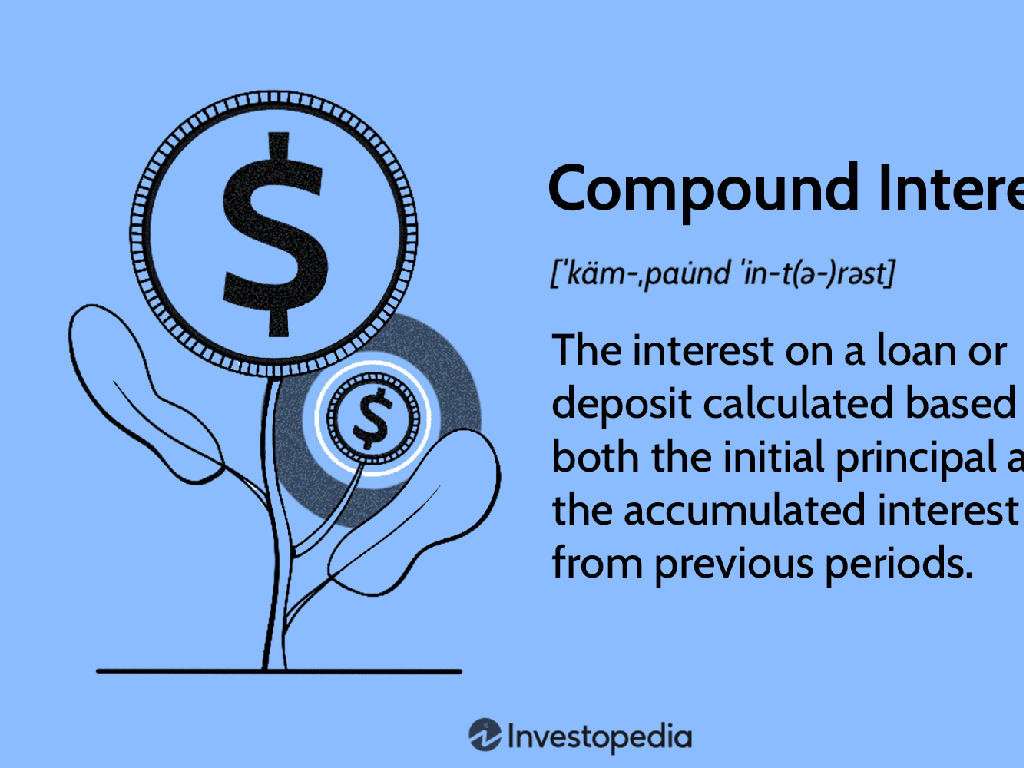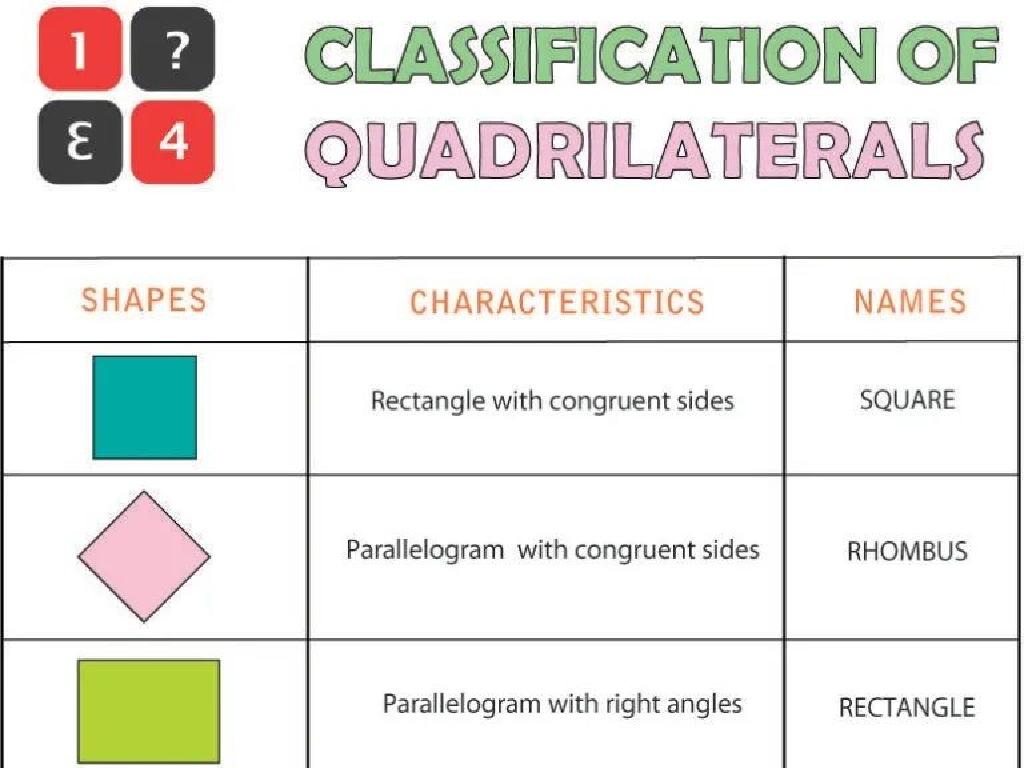Identify Prepositions
Subject: Language arts
Grade: Fourth grade
Topic: Prepositions
Please LOG IN to download the presentation. Access is available to registered users only.
View More Content
Welcome to Prepositions!
– Understanding prepositions
– Prepositions connect nouns/pronouns
– They show how nouns/pronouns relate to other words.
– Common prepositions: on, in, by
– More examples: to, from, over, under
– Using prepositions in sentences
– Example: The cat is on the mat.
|
This slide introduces the concept of prepositions to fourth-grade students. Prepositions are words that link nouns, pronouns, and phrases to other words in a sentence. They typically indicate location, time, direction, or introduce an object. Start by explaining the role of prepositions in providing additional context in a sentence. Use visual aids or gestures to demonstrate prepositions like ‘on’, ‘in’, and ‘by’. Encourage students to come up with their own examples using common prepositions. To reinforce learning, have students practice by identifying prepositions in sentences from their favorite books or in classroom objects’ descriptions.
Exploring Prepositions
– Prepositions show location, time, direction
– ‘Under the table’, ‘during the movie’, ‘towards the park’
– They act as glue in sentences
– Examples: on, in, by, to, at
– ‘On the desk’, ‘in the box’, ‘by the tree’, ‘to the store’, ‘at school’
– Let’s review examples together!
– We’ll use sentences to see how prepositions work
|
This slide introduces the concept of prepositions to fourth graders, emphasizing their role in indicating location, time, and direction within sentences. Explain that prepositions are essential for providing context and joining elements together, making them the ‘glue’ of the sentence. Provide clear examples of common prepositions and use them in simple sentences to illustrate their function. Encourage students to think of additional examples and to be prepared to identify prepositions in sentences during class activities. This will help them understand how prepositions fit into the structure of a sentence and how they provide crucial information about the relationship between different parts of a sentence.
Exploring Prepositions of Location
– Prepositions tell location
– Common examples: above, below
– ‘Above’ as in ‘the clock above the door’
– More examples: between, under, over
– ‘Between’ as in ‘the desk between two chairs’
– Classroom activity: Find prepositions
– ‘Under’ as in ‘the cat under the table’
|
This slide introduces students to prepositions that describe the location of objects. Prepositions are words that show the relationship of a noun or pronoun to another word in the sentence, often indicating location. Start by explaining the concept with simple examples and then move on to more complex ones. For the activity, have students look around the classroom and identify objects that can be described using prepositions of location. For example, a book on the desk, a poster above the chalkboard, or a backpack under a chair. This will help them understand how prepositions function in everyday language. Provide guidance and encourage students to use complete sentences when sharing their findings.
Prepositions of Time
– What are prepositions of time?
– Words that show when something happens
– Common time prepositions
– Examples: ‘before’, ‘after’, ‘during’, ‘on’, ‘at’
– Using prepositions in sentences
– ‘I will meet you after school.’ shows ‘after’ tells us when
– Class activity: Sentence creation
– Create sentences using a list of time prepositions
|
This slide introduces prepositions of time, which are words that help us understand when events occur. Start by explaining the concept with simple definitions and then provide common examples that the students are likely to encounter. Next, show how these prepositions function within the context of a sentence. For the class activity, encourage students to think of events in their daily lives and write sentences using the prepositions of time. Provide guidance and examples on the board for reference. This activity will help solidify their understanding by applying the concept directly. Be prepared with additional examples and prompts to assist students who may need more support.
Prepositions of Direction
– Prepositions show direction
– Examples: to, from, up, down, into
– ‘To the store’, ‘from the park’, ‘up the hill’, ‘down the slide’, ‘into the house’
– Create a sentence with one
– Use a direction preposition in your own sentence
– Share your sentence with the class
|
This slide introduces students to prepositions that indicate direction. Explain that prepositions are words that show the relationship between a noun or pronoun and other words in a sentence, specifically relating to direction in this case. Provide clear examples for each preposition listed and ask students to think of additional examples. Encourage creativity in their sentences and remind them that prepositions are often small but play a crucial role in indicating where something or someone is going. In the next class, have students share their sentences to reinforce their understanding and to practice using these prepositions in context.
Let’s Practice Identifying Prepositions!
– I’ll give sentences with prepositions
– Work with a partner on this task
– Team up and discuss each sentence
– Find as many prepositions as possible
– Look for words that show position or direction
– Get set for the Preposition Hunt!
|
This slide is designed to engage students in a collaborative and interactive activity to identify prepositions in sentences. The teacher will provide sentences, and students are expected to work in pairs to find and highlight the prepositions. This activity helps reinforce the concept of prepositions as words that link nouns, pronouns, or phrases to other words within a sentence and often indicate location, time, or direction. The teacher should circulate the room, offering guidance and ensuring that each pair is participating. After the activity, review the sentences together and discuss why each preposition was used. This will help students understand the practical application of prepositions in language.
Preposition Game Time!
– Let’s play ‘Simon Says’ with prepositions
– Follow ‘Simon says, put your pen on the desk’
– ‘On’ is the preposition to focus here
– Listen carefully for prepositions
– Only move when you hear a preposition
|
This slide introduces a fun and interactive game to help students identify prepositions in commands. The game is based on the classic ‘Simon Says’ but with a twist focusing on prepositions. The teacher will give commands using prepositions, and students will only act on the command if it contains a preposition. For example, ‘Simon says, put your pen on the desk,’ where ‘on’ is the preposition. This activity will help students listen for and identify prepositions in everyday language. It’s important to remind students to only move when they hear a preposition. The teacher should prepare a list of commands using different prepositions and be ready to discuss why each is a preposition after the game.
Class Activity: Preposition Art
– Draw your favorite place
– Use 5 prepositions in description
– Words like ‘above’, ‘below’, ‘between’
– Share your art with the class
– Explain your prepositions
– Tell us why you chose each preposition
|
This activity is designed to help students understand prepositions by associating them with a visual representation. Students will create a drawing of a place they love and then use prepositions to describe various elements within their artwork. Encourage creativity in their drawings and sentences. Provide examples of prepositions they can use, such as ‘under’, ‘next to’, ‘between’, ‘above’, and ‘behind’. After completing their drawings and sentences, students will present their work to the class, explaining the prepositions they used. This will reinforce their understanding through teaching and provide an opportunity for public speaking practice. Possible variations of the activity could include pairing students to guess the prepositions used in each other’s artwork or creating a classroom gallery of the drawings with prepositions labeled.
Conclusion & Homework: Prepositions
– Congratulations on learning prepositions!
– Homework: Write 10 sentences
– Include different prepositions in each sentence
– Use a variety of prepositions
– Examples: ‘under’, ‘over’, ‘between’, ‘through’
– Share your sentences next class
|
Today’s class focused on identifying prepositions and understanding their role in sentences. As homework, students are tasked with writing 10 sentences, each incorporating a different preposition. This exercise will help reinforce their understanding of how prepositions provide additional detail and clarity in sentences. Encourage creativity and the use of a diverse set of prepositions. In the next class, we will review these sentences together, providing an opportunity for students to share their work and learn from each other’s examples. This will also serve as a formative assessment to gauge each student’s grasp of the concept.





